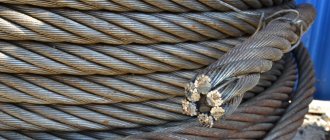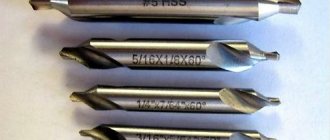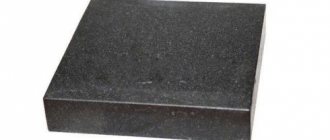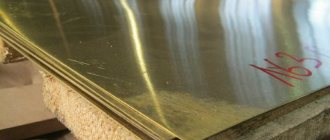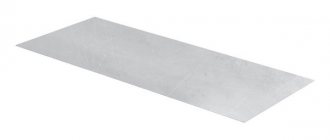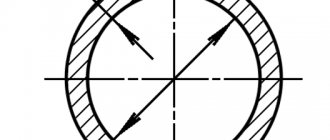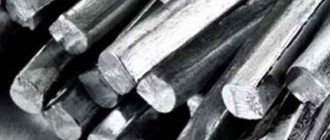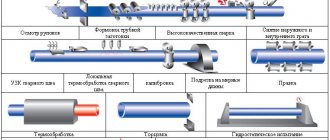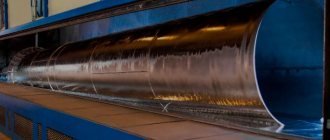Modern technologies require high precision in the production of various technical products. This parameter is achieved through the use of various measuring instruments.
The article provides a detailed description of the micrometer, its varieties, types, and areas of use. Instructions will also be given on how to use the micrometer and how to set it up correctly, as well as store it.
Purpose
A micrometer is used to measure quantities such as thickness, diameter, width, cross-section, depth of various objects. Depending on the type and purpose of the device, measurements are available from a few centimeters to microns.
Such devices are used for designing, creating, and repairing various technical parts, devices, and technological projects.
Device
Despite the many varieties of micrometers, the device retains its basic design details. The micrometer consists of the following parts:
- Diametric bracket. This is the base of the micrometer. It is used to place the item being measured.
- Fixed sponge. Placed at the end of the bracket to hold the part motionless.
- Movable sponge. It is she who presses the object for measurement.
- Threaded clamp. Used to fix the movable jaw.
- Calculation scale with markings stamped on it. One side of the scale is divided into centimeters, the other into millimeters. Depending on the type of micrometer, the graduations may be smaller or larger.
- The cylindrical drum is also the moving part of the micrometer. This part is marked in microns.
- Ratchet. Necessary for fixing the sponge without pressure. The ratchet assembly prevents deformation of the surface of the part being measured during strong clamping.
This is a standard micrometer device. Different types of this device may have additional or modified parts. Next, the main types of micrometers and their areas of use will be described.
Micrometers
Content
- Types of micrometers
- Basic parameters and dimensions of micrometers
- Examples of symbols for micrometers
- Technical requirements for micrometers
- Literature
Types of micrometers
Micrometers with division values of 0.01 and 0.001 mm must be manufactured in accordance with GOST 6507-90.
Micrometers must be made of the following types:
| MK | — | smooth for measuring the external dimensions of products (Fig. 1); |
| ML | — | sheet with a dial for measuring the thickness of sheets and tapes (Fig. 2); |
| MT | — | pipe for measuring pipe wall thickness (Fig. 3); |
| MOH | — | gear gauges for measuring the length of the common normal of gears with a module of 1 mm (Fig. 4); |
| MG | — | micrometer heads for measuring displacement (Fig. 5); |
| MP | — | micrometers for measuring wire thickness (Fig. 6). |
Note - The smallest internal diameter of pipes measured with a micrometer type MT should be 8 or 12 mm.
Fig.1 Micrometer type
MK
. 1 – bracket; 2 – heel; 3 – micrometric screw; 4 – stopper; 5 – stem; 6 – drum; 7 – ratchet (clutch).
Fig.2 Micrometer type
ML
. 1 – bracket; 2 – heel; 3 – micrometric screw; 4 – stopper; 5 – stem; 6 – drum; 7 – ratchet (clutch); 8 – dial; 9 – arrow.
Fig.3 Micrometer type
MT
. 1 – bracket; 2 – heel; 3 – micrometric screw; 4 – stopper; 5 – stem; 6 – drum; 7 – ratchet (clutch).
Fig.4 Micrometer type
MZ
.
1 – bracket; 2 – heel; 3 – measuring sponge; 4 – micrometric screw; 5 – stopper; 6 – stem; 7 – drum; 8 – ratchet (friction). Fig.5 Micrometer type MG
.
1 – micrometric screw; 2 – stem; 3 – drum; 4 – ratchet (friction). Fig.6 MP
. 1 – body; 2 – micrometric screw; 3 – stem; 4 – drum; 5 – ratchet (friction clutch).
Micrometers should be made:
- with a division value of 0.01 mm - when reading readings on the stem and drum scales (Fig. 1-6);
- with a vernier reading value of 0.001 mm - when reading readings on the scales of the stem and drum with a vernier (Fig. 7 and 8);
- with a discrete step of 0.001 mm - when reading readings using an electronic digital reading device and stem and drum scales (Fig. 9).
Fig.7 Micrometer taking readings on the stem scale.
1 – stem; 2 – vernier, 3 – drum; 4 – digital reading device. Fig.8 Micrometer taking readings on the drum scale. 1 – stem; 2 – vernier, 3 – drum. Fig.9 Micrometer taking readings from an electronic digital reading device and stem and drum scales. 1 – stem; 2 – drum; 3 – electronic digital reading device. Note - Figures 1-9 do not define micrometer designs.
Basic parameters and dimensions of micrometers
The main parameters, dimensions and accuracy classes of micrometers must correspond to those established in Table 1.
Table 1 - Main parameters, dimensions and accuracy classes of micrometers
| Micrometer type | Reading micrometer measuring range | Micrometric screw pitch | Measuring movement of microscrew | ||||
| according to stem and drum scales of accuracy classes | according to the stem and drum scales with vernier | according to electronic digital device accuracy classes | |||||
| 1 | 2 | 1 | 2 | ||||
| MK | 0-25; 25-50; 50-75; 75-100 | 0,5 | 25 | ||||
| 100-125; 125-150; 150-175; 175-200; 200-225; 225-250; 250-275; 275-300 | — | ||||||
| 300-400; 400-500; 500-600 | — | ||||||
| ML | — | 0-5 | 1,0 | 5 | |||
| 0-10 | 10 | ||||||
| 0-25 | 25 | ||||||
| MT | 0-25 | 0,5 | 25 | ||||
| MOH | 0-25; 25-50; 50-75; 75-100 | ||||||
| MG | 0-15 | 15 | |||||
| 0-25 | 25 | ||||||
| — | 0-50 | — | 50 | ||||
| MP | 0-10 | 10 | |||||
The diameter of the smooth part of the micrometer screw should be 6 h
9, 6.5
h
9 or 8
h
9.
At the ends of the micrometer screw and the heel for a length of up to 4 mm, a reduction in diameter is allowed, but not more than 0.1 mm.
The electrical power supply for micrometers with an electronic digital readout device must be from a built-in power source.
Electrical power supply for micrometers that output measurement results to external devices is from the built-in power supply and (or) from a general-purpose network through a power supply.
Examples of symbols for micrometers
An example of a symbol for a smooth micrometer with a measuring range of 25-50 mm of the 1st accuracy class:
Micrometer MK50-1 GOST 6507-90
An example of a symbol for a micrometer head with a vernier with a measuring range of 0-25 mm:
Micrometer MG N25 GOST 6507-90
An example of a symbol designation of a smooth micrometer with an electronic digital reading device with a measuring range of 50-75 mm:
Micrometer MK Ts75 GOST 6507-90
Technical requirements for micrometers
The measuring force for micrometers of types ML, MT and MZ must be no less than 3 and no more than 7 N
, and for other types of micrometers - no less than 5 and no more than
10 H.
The fluctuation of the measuring force for all types of micrometers should not exceed 2 N
.
The permissible error limit of the micrometer at any point in the measurement range at a normalized measuring force and temperature not exceeding the values established in table 2, as well as the permissible change in micrometer readings from bending the bracket with a force of 10 N
, directed along the axis of the screw, must correspond to those established in Table 3.
Table 2 - Micrometer permissible error limit
| Upper limit of micrometer measurements, mm | Permissible temperature deviation from 20 °C, °C |
| Up to 150 | ±4 |
| St. 150 to 500 | ±3 |
| St. 500 to 600 | ±2 |
For micrometers with flat measuring surfaces (types MK and MZ), the parallelism tolerance of the measuring surfaces must correspond to that established in Table 4.
Blockages are allowed at a distance of up to 0.5 mm from the edges of the measuring surfaces.
The flatness tolerance of the flat measuring surfaces of the micrometer must correspond to that established in Table 5.
Table 3 - Limit of permissible error of the micrometer
| Micrometer type | Upper limit of micrometer measurements, mm | Maximum permissible error of a micrometer with readings | Allowable change in micrometer readings due to bracket bending at a force of 10 N | ||||
| according to stem and drum scales of accuracy classes | according to the stem and drum scales with vernier | according to electronic digital device accuracy classes | |||||
| 1 | 2 | 1 | 2 | ||||
| µm | |||||||
| MK | 25 | ±2,0 | ±4,0 | ±2,0 | ±2,0 | ±4,0 | 2,0 |
| 50 | ±2,5 | ||||||
| 75 | ±3,0 | 3,0 | |||||
| 100 | ±3,0 | ||||||
| 125; 150 | ±3,0 | ±5,0 | — | 4,0 | |||
| 175; 200 | 5,0 | ||||||
| 225; 250; 275; 300 | ±4,0 | ±6,0 | ±4,0 | 6,0 | |||
| 400 | ±5,0 | ±8,0 | — | 8,0 | |||
| 500 | 10,0 | ||||||
| 600 | ±6,0 | ±10,0 | 12,0 | ||||
| ML | 5; 10; 25 | — | ±4,0 | ±2,0 | ±2,0 | ±4,0 | 2,0 |
| MT | 25 | ±2,0 | |||||
| MOH | 25 | ±4,0 | ±5,0 | ±3,0 | ±5,0 | ||
| 50 | ±3,0 | ||||||
| 75 | 3,0 | ||||||
| 100 | |||||||
| MG | 15; 25 | ±1,5 | ±3,0 | ±2,0 | ±2,0 | ±3,0 | — |
| 50 | — | 4,0 | — | — | — | ||
| MP | 10 | ±2,0 | ±2,0 | ±2,0 | ±4,0 | 2,0 | |
Notes:
- The error of micrometers of types MK, ML, MT and MP is determined by measures with flat measuring surfaces.
- The error of an MZ micrometer is determined by measures with cylindrical measuring surfaces installed at a distance of 2-3 mm from the edge of the micrometer's measuring surfaces.
Table 4 — Parallelism tolerances for micrometers type MK and MZ
| Micrometer type | Upper limit of micrometer measurements, mm | Parallelism tolerance of flat measuring surfaces of a micrometer, µm, accuracy classes | |
| 1 | 2 | ||
| MK | 25 | 1,5 | 2,0 |
| 50 | 2,0 | ||
| 75; 100 | 3,0 | 3,0 | |
| 125; 150; 175; 200 | 4,0 | ||
| 225; 250 | 4,0 | 6,0 | |
| 275; 300; 400 | 5,0 | 8,0 | |
| 500 | 7,0 | 10,0 | |
| 600 | 12,0 | ||
| MOH | 25; 50 | 2,0 | 2,0 |
| 75; 100 | 3,0 | 3,0 | |
Table 5 - Flatness tolerance of flat micrometer measuring surfaces
| Micrometer type | Flatness tolerance of micrometer measuring surfaces, µm, accuracy classes | |
| 1 | 2 | |
| MK, ML, MT, MG, MP | 0,6 | 0,9 |
| MOH | 0,9 | |
Note - For micrometers with vernier, the tolerances of parallelism and flatness of the measuring surfaces must comply with the standards of accuracy class 1.
The micrometer and micrometer head with an electronic digital reading device must provide:
- issuance of digital information in direct code (indicating the sign and absolute value);
- setting the origin in the absolute coordinate system;
- storing the measurement result;
- Memory clearing with restoration of the current measurement result.
The measuring surfaces of micrometers of types MK, ML, MT, MG and MP must be equipped with a hard alloy in accordance with GOST 3882.
The measuring surfaces of the micrometer type MZ, and at the request of the consumer also of the micrometer type MT, are made hardened. The hardness of hardened measuring surfaces made of high-alloy steel must be at least 51 HRCE, and for high-quality carbon structural and tool steels - not less than 61 HRCE.
On the measuring surfaces of a micrometer equipped with a hard alloy, the presence of pores more than 120 µm in width is not allowed. The degree of porosity should not be higher than 0.4% according to GOST 9391.
Roughness parameter of micrometer measuring surfaces – Ra
≤ 0.08 µm according to GOST 2789.
The micrometer must have a ratchet (clutch) or other device that provides the measuring force within specified limits.
The micrometer must have a locking device to secure the micrometer screw.
A micrometer screw secured by a locking device should not rotate after applying the greatest torque transmitted by the device providing the measuring force, and for MK type micrometers, the skew of the flat measuring surface should not increase the deviation from parallelism of the flat measuring surfaces beyond the established ones by more than 1 µm - for micrometers with an upper measurement limit of up to 100 mm and 2 microns - for micrometers with an upper measurement limit of more than 100 mm.
Note - A micrometer with an electronic digital reading device, as well as micrometers of the MG and MP types, can be manufactured without a locking device.
The design of the micrometer must ensure the possibility of installing it in its original position when the measuring surfaces come into contact with each other or with the setting standard and compensation for wear of the micrometric thread of the screw and nut, while the initial stroke of the stem should be visible in its entirety, but the distance from the end of the conical part of the drum to the nearest edge of the stroke should not exceed 0.15 mm.
The length of the drum scale division must be at least 0.8 mm.
The width of the scale strokes and the longitudinal stroke on the stem should be from 0.08 to 0.2 mm, while the difference in the width of the drum stroke and the longitudinal stroke on the stem, as well as the difference in the width of the drum and vernier scale strokes should not be more than 0.03 mm.
The width of all strokes is allowed to be no more than 0.25 mm if the length of the drum scale division is more than 1 mm, while the difference in the width of the drum stroke and the longitudinal stroke on the stem should not be more than 0.05 mm.
The surfaces on which strokes and numbers are applied should not be shiny.
For a micrometer with an electronic digital reading device, the height of the numbers on the reading device must be at least 4 mm.
The distance from the surface of the stem to the measuring edge of the drum at the longitudinal stroke of the stem, except for a micrometer with a vernier, should be no more than 0.45 mm (Fig. 10).
Fig. 10 Distance from the surface of the stem to the measuring edge of the drum. 1 – surface of the stem; 2 – measuring edge; 3 – drum
The angle α/2 forming the conical part of the drum on which the scale is applied must be no more than 20°. The design of the micrometer must provide a guaranteed gap between the drum and the stem.
The outer surfaces of the micrometer, with the exception of the heel, micrometer screw, and measuring sponge, must have an anti-corrosion coating in accordance with GOST 9.303 and GOST 9.032.
The outer surfaces of micrometer brackets of types MK and MZ with an upper measurement limit of more than 50 mm must be thermally insulated.
Requirements for micrometer type MK
A micrometer of type MK with an upper measurement limit of more than 300 mm must have a movable or replaceable foot, providing the ability to measure any size within the measurement range of a given micrometer. The reach of the micrometer bracket with an upper measurement limit of up to 300 mm must be at least B
/2+4, and over 300 mm - not less than
B
/2+1
b
, where
B
is the upper limit of measurement.
The fastening of a movable or replaceable heel should ensure that the position of the heel remains unchanged during measurements.
The measuring surfaces of installation measures up to 300 mm long must be flat, and those over 300 mm must be spherical.
The outer surfaces of the installation measures, with the exception of measuring surfaces, must have an anti-corrosion coating in accordance with GOST 9.303 and GOST 9.032.
The permissible deviation of the length of the installation measures from the nominal size and the total tolerance for flatness and parallelism of their measuring surfaces must correspond to those established in Table 6.
Roughness parameter of measuring surfaces of installation standards – Ra
≤ 0.08 microns according to GOST 2789.
Table 6 - Permissible deviation of micrometer length
| Nominal size of installation measures, mm | Permissible deviation of the length of installation measures from the nominal size of micrometers of accuracy class, µm | Total tolerance of flatness and parallelism of measuring surfaces of installation standards, µm | |
| 1 | 2 | ||
| 25; 50; 75 | ±1,0 | ±1,5 | 0,5 |
| 100; 125 | ±1,2 | ±2,0 | 0,75 |
| 150; 175 | 1,0 | ||
| 200; 225; 250; 275 | ±1,5 | 1,5 | |
| 325; 375; 425; 475 | ±2,0 | ±3,5 | — |
| 525; 575 | ±4,0 | — | |
Note - For micrometers with a vernier, the permissible deviation of installation standards from the nominal size must correspond to the standards for micrometers of accuracy class 1.
Setting gauges must be manufactured with hardened measuring surfaces. The hardness of the measuring surfaces of the installation measures must be at least 59 HRCE.
Requirements for micrometer type ML
An ML type micrometer with readings on a stem and dial scale is made with a stationary dial and an arrow that rotates when the drum moves.
The reach of the micrometer bracket must be no less than:
- 20 mm – for micrometers with an upper measurement limit of 5 mm;
- 40 mm – for micrometers with an upper measurement limit of 10 mm;
- 80 mm – for micrometers with an upper measurement limit of 25 mm.
The measuring surface of the micrometer screw should be flat and the measuring surface of the heel should be spherical.
It is allowed to manufacture a micrometer with a measuring range of 0-25 mm with a spherical measuring surface of a microscrew.
Requirements for the dial scale and hand:
- the distance between the axes of two adjacent scale lines must be at least 1.25 mm;
- width of scale lines – (0.35±0.05) mm; the difference in the width of the strokes is no more than 0.05 mm;
- width of the end of the arrow – (0.25±0.05) mm;
- the overlap of the dial scale with the end of the arrow should be no less than 1/4 and no more than 3/4 of the length of the short strokes;
- the gap between the end of the hand and the dial is no more than 0.7 mm.
Requirements for micrometer type MT
The measuring surface of the micrometer screw of the MT type micrometer should be flat, and the measuring surface of the heel should be spherical.
The bracket overhang must be at least 17 mm.
Requirements for micrometer type MZ
The nominal diameter of the measuring surfaces of the heel and the measuring jaw of the MZ type micrometer must be at least 24 mm. The bracket overhang must be at least 30 mm.
It is allowed to manufacture a heel with a cut off measuring surface.
Installation measures – plane-parallel end measures of length, accuracy class 3 according to GOST 9038.
Literature
- GOST 6507-90 Micrometers. Specifications
Varieties
Every year the design of various parts becomes more and more complex. Various types of micrometers are used for precise design.
There are 4 main types of device according to the measurement method and the function of issuing the final result:
- Analog micrometer. The simplest and most common device. This micrometer is completely mechanical. The measurement result is controlled using markings on the scale and drum.
- Pointer or lever. Almost similar to its mechanical counterpart. It is distinguished by the presence of a pointer dial. The display is marked in microns and also shows the degree of pressure on the object being measured. These micrometers are highly accurate.
- Electronic. These micrometers are similar in design to mechanical models. A special feature is the presence of a display on which the final measurement result is displayed. Such devices also have a memory function; they can be configured for calculations in the smallest parameters.
- Laser device. It is the most accurate and technologically sophisticated. In addition to the main function, it can calculate the most minor curvatures, deviations, and surface abrasions.
Next, we will look at what types of micrometers there are according to their area of use. The scope of application makes some adjustments to the design of this measuring device.
- Smooth. Using these devices, the diameter and cross-section of an object are measured.
- Pipe. They are used to calculate the difference between diameter and wall thickness. Often used to control the corrosion layer.
- Micrometer "tooth gauge". It is used in gear design. Using a gear gauge, the size, thickness, and depth of gear teeth are measured.
- Sheet micrometers. Necessary for measuring the thickness of thin sheet steel.
- Wire meter. Using it you can measure thin rods, wire, and balls of small diameter. Structurally, it differs from a mechanical device only in the absence of a bracket.
- Universal. It is equipped with special movable attachments, which significantly expands the scope of its intended use.
- Prismatic. The prism-shaped bracket allows you to measure parts with an angular or triangular cross-section.
- Depth gauge. Allows you to control the internal size of the part. Used to measure the depth of holes.
- Thread gauge. Used to measure metric and inch threads on fasteners.
- Double or paired. Necessary for measuring parts with several surface levels.
- Bore gauge. Just like depth gauges, they are used to control the depth of a part. They are distinguished by higher accuracy and the ability to measure the depth of a hole with a small cross-sectional diameter.
All the described varieties are similar in the principle of working with them.
TECHNICAL REQUIREMENTS
2.1. Characteristics
2.1.1. General requirements
2.1.1.1. Micrometers are manufactured in accordance with the requirements of this standard according to design documentation approved in the prescribed manner.
2.1.1.2. The measuring force for micrometers of types ML, MT and MZ must be no less than 3 and no more than 7 N, and for micrometers of other types - no less than 5 and no more than 10 N.
The fluctuation of the measuring force for all types of micrometers should not exceed 2 N.
2.1.1.3. The limit of permissible error of the micrometer at any point in the measurement range at a standardized measuring force and temperature not exceeding the values established in Table 2, as well as the permissible change in micrometer readings from bending the bracket with a force of 10 N directed along the axis of the screw, must correspond to those established in Table .3.
table 2
| Upper limit of micrometer measurements, mm | Permissible temperature deviation from 20 °C, °C | ||
| Before | 150 | ||
| St. | 150 | » | 500 |
| » | 500 | » | 600 |
| ±3 |
| ±2 |
Table 3µm
| Micrometer type | Upper limit of micrometer measurements, mm | Maximum permissible error of a micrometer with readings | Allowable change in micrometer readings due to bending of the bracket with a force of 10 N | ||||
| according to stem and drum scales of accuracy classes | according to the stem and drum scales with vernier | according to electronic digital device accuracy classes | |||||
| 1 | 2 | 1 | 2 | ||||
| MK | 25 | ±2,0 | ±4,0 | ±2,0 | ±2,0 | ±4,0 | 2,0 |
| 50 | ±2,5 | ||||||
| 75 | ±3,0 | 3,0 | |||||
| 100 | ±3,0 | ||||||
| 125; 150 | ±3,0 | ±5,0 | — | 4,0 | |||
| 175; 200 | 5,0 | ||||||
| 225; 250;275; 300 | ±4,0 | ±6,0 | ±4,0 | 6,0 | |||
| 400 | ±5,0 | ±8,0 | — | 8,0 | |||
| 500 | 10,0 | ||||||
| 600 | ±6,0 | ±10,0 | 12,0 | ||||
| ML | 5; 10; 25 | — | ±4,0 | ±2,0 | ±2,0 | ±4,0 | 2,0 |
| MT | 25 | ±2,0 | |||||
| MOH | 25 | ±4,0 | ±5,0 | ±3,0 | ±5,0 | ||
| 50 | ±3,0 | ||||||
| 75 | 3,0 | ||||||
| 100 | |||||||
| MG | 15; 25 | ±1,5 | ±3,0 | ±2,0 | ±2,0 | ±3,0 | — |
| 50 | — | ±4,0 | — | — | — | ||
| MP | 10 | ±2,0 | ±2,0 | ±2,0 | ±4,0 | 2,0 | |
Notes:
1. The error of micrometers of types MK, ML, MT and MP is determined by measures with flat measuring surfaces.
2. The error of an MZ micrometer is determined by measures with cylindrical measuring surfaces installed at a distance of 2-3 mm from the edge of the micrometer’s measuring surfaces.
2.1.1.4. For micrometers with flat measuring surfaces (types MK and MZ), the parallelism tolerance of the measuring surfaces must correspond to that established in Table 4.
Table 4
| Micrometer type | Upper limit of micrometer measurements, mm | Parallelism tolerance of flat measuring surfaces of a micrometer, µm, accuracy classes | |
| 1 | 2 | ||
| MK | 25 | 1,5 | 2,0 |
| 50 | 2,0 | ||
| 75; 100 | 3,0 | 3,0 | |
| 125; 150; 175; 200 | 4,0 | ||
| 225; 250 | 4,0 | 6,0 | |
| 275; 300; 400 | 5,0 | 8,0 | |
| 500 | 7,0 | 10,0 | |
| 600 | 12,0 | ||
| MOH | 25; 50 | 2,0 | 2,0 |
| 75; 100 | 3,0 | 3,0 | |
Blockages are allowed at a distance of up to 0.5 mm from the edges of the measuring surfaces.
2.1.1.5. The flatness tolerance of the flat measuring surfaces of the micrometer must correspond to that specified in Table 5.
Table 5
| Micrometer type | Flatness tolerance of micrometer measuring surfaces, µm, accuracy classes | |
| 1 | 2 | |
| MK, ML, MT, MG, MP | 0,6 | 0,9 |
| MOH | 0,9 | |
Note to tables 4 and 5. For micrometers with a vernier, the tolerances of parallelism and flatness of the measuring surfaces must comply with the standards of accuracy class 1.
2.1.1.6. The micrometer and micrometer head with an electronic digital reading device must provide:
1) issuance of digital information in direct code (indicating the sign and absolute value);
2) setting the origin in the absolute coordinate system;
3) storing the measurement result;
4) memory blanking with restoration of the current measurement result.
2.1.1.7. The measuring surfaces of micrometers of types MK, ML, MT, MG and MP must be equipped with a hard alloy in accordance with GOST 3882-74.
The measuring surfaces of the micrometer type MZ, and at the request of the consumer also of the micrometer type MT, are made hardened. The hardness of hardened measuring surfaces made of high-alloy steel must be not lower than 49.7 HRC, and of high-quality carbon structural and tool steels - not lower than 60 HRC.
2.1.1.8. On the measuring surfaces of a micrometer equipped with a hard alloy, the presence of pores more than 120 µm in width is not allowed. The degree of porosity should not be higher than 0.4% according to GOST 9391-80.
2.1.1.9. The roughness parameter of the micrometer measuring surfaces is Ra ≤ 0.08 µm according to GOST 2789-73.
2.1.1.10. The micrometer must have a ratchet (clutch) or other device that provides the measuring force within specified limits.
2.1.1.11. The micrometer must have a locking device to secure the micrometer screw.
The micrometer screw, secured by a locking device, should not rotate after applying the greatest torque transmitted by the device providing the measuring force, and for micrometers of the MK type, the skew of the flat measuring surface should not increase the deviation from parallelism of the flat measuring surfaces beyond those established in paragraph 2.1.1.4 more than 1 micron - for micrometers with an upper measurement limit of up to 100 mm and 2 microns - for micrometers with an upper measurement limit of more than 100 mm.
Note. A micrometer with an electronic digital reading device, as well as micrometers of the MG and MP types, can be manufactured without a locking device.
2.1.1.12. The design of the micrometer must ensure the possibility of installing it in its original position when the measuring surfaces come into contact with each other or with the setting standard and compensation for wear of the micrometric thread of the screw and nut, while the initial stroke of the stem should be visible in its entirety, but the distance from the end of the conical part of the drum to the nearest edge of the stroke should not exceed 0.15 mm.
2.1.1.13. The length of the drum scale division must be at least 0.8 mm.
2.1.1.14. The width of the scale strokes and the longitudinal stroke on the stem should be from 0.08 to 0.2 mm, while the difference in the width of the drum stroke and the longitudinal stroke on the stem, as well as the difference in the width of the drum and vernier scale strokes should not be more than 0.03 mm.
The width of all strokes is allowed to be no more than 0.25 mm if the length of the drum scale division is more than 1 mm, while the difference in the width of the drum stroke and the longitudinal stroke on the stem should not be more than 0.05 mm.
2.1.1.15. The surfaces on which strokes and numbers are applied should not be shiny.
2.1.1.16. For a micrometer with an electronic digital reading device, the height of the numbers on the reading device must be at least 4 mm.
2.1.1.17. The distance from the surface of the stem to the measuring edge of the drum at the longitudinal stroke of the stem, except for a micrometer with a vernier, should be no more than 0.45 mm (Fig. 10).
1 - surface of the stem; 2 - measuring edge; 3 - drum
Damn.10
The angle α / 2 forming the conical part of the drum on which the scale is applied must be no more than 20°. The design of the micrometer must provide a guaranteed gap between the drum and the stem.
2.1.1.18. The outer surfaces of the micrometer, with the exception of the heel, micrometer screw, and measuring sponge, must have an anti-corrosion coating in accordance with GOST 9.303-84 and GOST 9.032-74.
The outer surfaces of micrometer brackets of types MK and MZ with an upper measurement limit of more than 50 mm must be thermally insulated.
2.1.1.19-2.1.1.22. (Excluded, Amendment No. 1).
2.1.2. Requirements for micrometer type MK
2.1.2.1. A micrometer of type MK with an upper measurement limit of more than 300 mm must have a movable or replaceable foot, providing the ability to measure any size within the measurement range of a given micrometer. The reach of a micrometer bracket with an upper measurement limit of up to 300 mm must be at least B/2 + 4, and above 300 mm - at least B/2 + 16, where B is the upper measurement limit.
The fastening of a movable or replaceable heel should ensure that the position of the heel remains unchanged during measurements.
2.1.2.2. The measuring surfaces of installation measures up to 300 mm long must be flat, and those over 300 mm must be spherical.
2.1.2.3. The outer surfaces of the installation measures, with the exception of measuring surfaces, must have an anti-corrosion coating in accordance with GOST 9.303-84 and GOST 9.032-74.
2.1.2.4. The permissible deviation of the length of the installation measures from the nominal size and the total tolerance for flatness and parallelism of their measuring surfaces must correspond to those established in Table 6.
Table 6
| Nominal size of installation measures, mm | Permissible deviation of the length of installation measures from the nominal size of micrometers of accuracy class, µm | Total tolerance of flatness and parallelism of measuring surfaces of installation standards, µm | |
| 1 | 2 | ||
| 25; 50; 75 | ±1,0 | ±1,5 | 0,5 |
| 100; 125 | ±1,2 | ±2,0 | 0,75 |
| 150; 175 | 1,0 | ||
| 200; 225; 250; 275 | ±1,5 | 1,5 | |
| 325; 375; 425; 475 | ±2,0 | ±3,5 | — |
| 525; 575 | ±4,0 | — | |
Note. For micrometers with a vernier, the permissible deviation of installation standards from the nominal size must correspond to the standards for micrometers of accuracy class 1.
2.1.2.5. The roughness parameter of the measuring surfaces of the installation standards is Ra ≤ 0.08 µm according to GOST 2789-73.
2.1.2.6. Setting gauges must be manufactured with hardened measuring surfaces. The hardness of the measuring surfaces of the installation standards must be at least 58 HRC.
2.1.3. Requirements for micrometer type ML
2.1.3.1. An ML type micrometer with readings on a stem and dial scale is made with a stationary dial and an arrow that rotates when the drum moves.
2.1.3.2. The reach of the micrometer bracket must be no less than:
| 20 mm — | for micrometers with an upper measurement limit | 5 mm; | |||||
| 40 mm | » | » | » | » | » | » | 10 mm; |
| 80 mm | » | » | » | » | » | » | 25 mm. |
2.1.3.3. The measuring surface of the micrometer screw should be flat and the measuring surface of the heel should be spherical.
It is allowed to manufacture a micrometer with a measuring range of 0-25 mm with a spherical measuring surface of a microscrew.
2.1.3.4. Requirements for the dial scale and hand:
1) the distance between the axes of two adjacent scale lines must be at least 1.25 mm;
2) width of scale lines - (0.35±0.05) mm; the difference in the width of the strokes is no more than 0.05 mm;
3) width of the end of the arrow - (0.25±0.05) mm;
4) the overlap of the dial scale with the end of the arrow should be no less than ¼ and no more than ¾ of the length of the short strokes;
5) the gap between the end of the arrow and the dial is no more than 0.7 mm.
2.1.4. Requirements for micrometer type MT
2.1.4.1. The measuring surface of the micrometer screw of the MT type micrometer should be flat, and the measuring surface of the heel should be spherical.
2.1.4.2. The bracket overhang must be at least 17 mm.
2.1.5. Requirements for micrometer type MZ
2.1.5.1. The nominal diameter of the measuring surfaces of the heel and the measuring jaw of the MZ type micrometer must be at least 24 mm. The bracket overhang must be at least 30 mm.
It is allowed to manufacture a heel with a cut off measuring surface.
2.1.5.2. Setting measures are plane-parallel end measures of length, accuracy class 3 according to GOST 9038.
2.2. Completeness
2.2.1. The MK type micrometer kit must include installation measures (for a micrometer with an upper measurement limit of 50 mm or more) and connecting sleeves (for a micrometer with an upper measurement limit of more than 300 mm).
2.2.2. The MZ type micrometer kit must include installation measures (for a micrometer with an upper measurement limit of 50 mm or more).
2.2.3. Each micrometer is accompanied by a passport in accordance with GOST 2.601*, including operating instructions.
* The document is not valid on the territory of the Russian Federation. GOST 2.601-2006 is in force.
2.3. Marking
2.3.1. Each micrometer must be marked with:
- manufacturer's trademark;
- division price or discrete step (it is possible not to indicate the discrete step);
- measurement range;
- serial number according to the manufacturer's numbering system;
- symbol of the year of manufacture or year of manufacture.
2.3.2. The installation measure must be marked with its nominal size.
2.3.3. The micrometer certificate must indicate the accuracy class.
2.3.4. The case is marked according to GOST 13762-86.
2.4. Package
2.4.1. Packaging of micrometers is in accordance with GOST 13762-86.
2.4.2. When transporting micrometers with an upper measurement limit of over 250 mm in containers, it is allowed to pack them in cases without transport containers. When packing without transport containers, cases with micrometers must be secured so that the possibility of their movement is excluded.
Setup instructions
Before you learn how to use a micrometer correctly, we suggest that you familiarize yourself with several nuances in preparing the device for use.
Setup and calibration
Before starting to measure a part, you must ensure that the calibration is accurate. This requires:
- Clean the surface of the tool jaws. To do this, place a blank sheet of plain paper between them. The jaws are clamped under slight pressure. Next you need to remove the sheet. The operation must be repeated several times. This removes dirt, grease and moisture. It is prohibited to use hard rags or sandpaper for this purpose.
- To set up the device you need to use a standard. Each similar tool is equipped with such a part. The reference workpiece must be clamped between the jaws, fixed using a ratchet mechanism and checked for alignment of the mark with the size of the standard.
If the indicators differ, the tool will have to be adjusted. To do this you need:
- Loosen the movable jaw and remove the reference sample.
- Combine the jaws again until they stop without applying pressure.
- Check how zero risk is combined.
- If there is no alignment, you need to fix the position of the jaws.
- Loosen the ratchet mechanism.
- Scroll the drum until the zero marks align.
- Secure the ratchet mechanism with the fastening screw.
Thus, all parts of the micrometer are brought into alignment with zero. This calibration will help you measure with a micrometer as accurately as possible.
Operating instructions
Measurements with a micrometer should begin by setting the most convenient position for the instrument. It can be held in your hands, or firmly secured in a vice. Next you need:
- Place the part to be tested in the tool bracket.
- Squeeze using a movable sponge until it stops. Do not clamp under high pressure.
- Turn the ratchet mechanism as far as it will go, but without applying excessive pressure.
- Secure the position by moving the clamp to the closed position.
- Look at the combination of marks.
The micrometer readings are read as follows:
- The stem of the instrument has a main and an additional scale. The main one is marked in large quantities and is located below. On the additional one, risks of small value are displayed, its position is above the main scale. The main ones are the risks of the main scale with digital marks.
- The drum has a scale with marks calculated in hundredths of a millimeter.
- First, the integer numeric value of the lower scale is determined. If the line stops near the number “5”, then the whole number is equal to 5 millimeters.
- Then you need to add the number from the top scale to this value. The markings on it have values in fractions. If the risk stops before the mark, its value is not taken into account, and if after, then it must be added to the main result. For example, if the mark has passed by one division, it will be equal to 0.5 mm.
- Next you need to determine hundredths. To do this, you need to remove the values from the drum.
- The drum line is aligned with the central strip between the 2 scales on the stem. For example, the value is 50.
- The final calculation is carried out by adding all the data: 5+0.5+0.5=6 mm.
Working with a micrometer is quite simple if it is accurately calibrated and has a flat surface on both jaws.
A micrometer for internal measurements is used in a different way. Its movable jaw is placed in the hole until it stops. Next, you need to align the tool stem with the surface of the part. After alignment and stop, the stem is fixed with a ratchet, and the resulting data is read. The reading method is completely identical to the description in the instructions.
Types and types of micrometers and how to choose
A micrometer is a universal instrument designed for measuring linear dimensions by the absolute or relative contact method in the area of small sizes with low error, the conversion mechanism of which is a screw-nut micropair.
The micrometer is mainly used to measure external dimensions with high accuracy. In general, it is divided into several main parts and consists of a rigid bracket, on one side of which a fixed heel is mounted, and on the other there is a movable measuring rod. The rod moves by rotating a micrometer screw (hence the name of the instrument). Up to 300 mm are available with a measurement range of 25 mm, more - 100 mm. The high quality of manufacturing of the microscrew allows you to take dimensions with an accuracy of 0.01 mm to 0.001 mm. The most common type is smooth MK micrometers, but in addition, many special types are produced for highly specialized work.
According to GOST 13762-86, storage and transportation of micromeasures is provided at all stages of operation in a special case or case; at the stage of transportation to the place of sale, storage can be carried out in packaging.
To obtain accurate readings, you need to know how to use a micrometer correctly and in what area it will be used - this will help you choose the best option. The fact is that a micrometer is a very precise measuring device, and its incorrect operation will inevitably lead to an increase in measurement error. Firstly, you should only use a micrometer in warm rooms (20±10°C), and if you brought it from the cold, you need to wait some time until the temperature of the instrument is equal to the ambient temperature. Then you need to check the micrometer is set to zero.
In general, GOST 6507-90 stipulates that micrometers can be used at ambient temperatures from 10 to 30 °C and relative air humidity of no more than 80% at a temperature of 25 °C
In models with a measuring range of 0-25 mm, the measuring surfaces are brought together; in other models, you need to use a special setting measure, included in the kit, to set the measuring surfaces to the minimum position (for example, for a range of 25-50 mm, the length of the setting measure will be 25 mm, for 50-75 – 50 mm, etc.). In this position, it is checked whether the micrometer reading device shows zero. If not, calibration needs to be done. To do this, in mechanical models, the included key is used, which allows you to turn the drum and align the zero line; in electronic models everything is simpler - you just need to press the reset button to zero. After setting the micrometer, you can begin measurements.
During work, to bring the heels together with the measured size, you need to use a special mechanism provided in the design that normalizes the clamping force - a ratchet or clutch. This allows you to always take measurements with the same force, avoiding over-tightening, which is certainly important to ensure the same readings. Also, during measurements, you need to hold the micrometer by a special insulating plastic pad located on the bracket so that heat from your hands does not affect the values.
According to the method of taking readings, all manufactured micrometers can be divided into the following groups:
Mechanical micrometers
The most common type, dimensions are taken using the vernier drum used in the design. Allows measurements with an accuracy of 0.01 mm. There are scales on the stem of the micrometer head and the drum, which are used to determine the size. As an example, we can cite smooth micrometers MK, models MK-25, MK-50, MK-75, etc.
Electronic micrometers
A modern model that uses an electronic digital display to take measurements. The advantages are increased accuracy, up to 0.001 mm, and ease of use. In addition, they have the functions of setting to zero at any point, converting millimeters to inches, switching between absolute and relative measurements, and outputting data to a computer. The letter “C” is added to the designation of this type, so for smooth electronic micrometers it will be MKTs, and accordingly the models MKTs-25, MKTs-50, MKTs-75, etc.
Pointer micrometers
determined using the dial indicator present in the design. Among the representatives are sheet micrometers ML (models ML-5, ML-10, ML-25) and lever micrometers MR and MRI (models MR-25, MR-50, MR-75, MR-100, MRI-125, MRI- 150, etc.).
As mentioned, a wide variety of micrometers are available. For many types of work there is its own design, different from others. Features include the use of special shapes of brackets and measuring surfaces, additional mechanisms that facilitate work. Here are the main types of micrometers used today:
Smooth micrometers MK, MKTs
Universal type micrometer. The micrometer rod and anvil have smooth measuring surfaces; the reach of the clamp allows you to measure diameters on round surfaces. Available with mechanical (MK) and electronic (MCC) reference systems. Measurement range - 25 mm for models with an upper limit of up to 300 mm (MK-25, MK-50, etc. to MK-300), more - with a range of 100 mm (MK-400, MK-500, etc. .).
Lever micrometers MR, MRI
The design has a lever for heel retraction and a dial indicator for taking readings. Mainly used in mass production, when it is necessary to check the same outer size on a batch of parts. To do this, the micrometer is initially set to the nominal size, and then during operation, the deviation from it is determined using an indicator for each part. MR models are produced with a reading accuracy of 0.001 and 0.002 mm (MR-25-0.001, MR-50-0.002, etc.); MRI models - with an accuracy of 0.01 mm (MRI-25-0.01, MRI-50-0.01, etc.).
Sheet micrometers ML
Used to determine the thickness of sheet and strip material. It can be steel, plastic, glass, PVC film, etc. This type is characterized by a bracket with a long reach, which allows you to measure dimensions at a distance from the edge of the product. The division value is 0.01 mm. ML micrometers produced by KirovInstrument are produced with a pointer dial to simplify readings; for other manufacturers, the size is determined by the lined vernier on the micrometer screw. Models ML-5, ML-10, ML-25, ML-50 are produced.
Pipe micrometers MT
To determine the wall thickness of pipes and other rounded products. The peculiarity of this type is the shape of the fixed heel - it is made with a spherical surface. This reduces the contact patch with the product being measured and prevents the curvature of the surface from affecting the result. Several modifications of pipe micrometers are produced - this can be the “classic” version with a rectangular bracket and a rounded heel pressed into it; or the fixed part can be made in the form of a rod with a thickening at the end, which allows measurements to be taken deeper from the edge of the product. Available with an accuracy of 0.01 mm, models MT-15, MT-25, MT-50.
Gear micrometers MZ
Designed to determine the length of the common normal of gears. The measuring surfaces of the heel and movable rod of this model have wide measuring surfaces, at least 24 mm in diameter, which makes it easier to center them along the chord of the tooth. They are used for teeth with a modulus of 1 mm and have an accuracy of 0.01 mm. Models from MZ-25 to MZ-300 are produced.
Micrometers with MVM/MVU inserts
Allows you to measure the average diameter of threads. There are holes in the heel and the movable rod of the micrometer into which the specially shaped inserts included in the kit are inserted. They are standardly equipped with inserts for metric threads; upon additional order, they can be supplied with inserts for inch and pipe threads. Models are produced from MVM-25 to MVM-350.
Prismatic micrometers
Used to determine the outer diameter of a multi-blade tool. Instead of a fixed heel, an angle bracket with carbide plates is used here, forming a supporting prism. The following modifications are available: – MTI type – for a three-edged tool, prism angle 60° (models from MTI-20 to MTI-80); – MPI type – for a five-blade tool, prism angle 108° (models from MPI-25 to MPI-105); – MSI type – for a seven-blade tool, prism angle 128°34′ (models from MSI-25 to MSI-105).
Micrometers with small measuring surfaces MK-MP
The measuring surfaces are in the form of thin rods with a diameter of 2 mm. Used to measure grooves, recesses, and small parts. An electronic model MKTs-MP is also produced. Measuring ranges 0-25, 25-50, 50-75, 75-100 mm.
Spot micrometers MK-TP
They have an even smaller contact area, 0.3 mm. The measuring surfaces are shaped like pointed cones. The electronic model is designated MKTs-TP. Measuring ranges 0-25, 25-50, 50-75, 75-100 mm.
Micrometers with mechanical slider MKTSM
They differ from smooth MK micrometers by the presence of an additional digital slider that takes readings, which makes it easier to take values. Also, reading can be carried out in the usual way using a scale on the stem and drum. Models are available with ranges from 0-25 to 275-300 mm.
Micrometers for internal measurements (another name is micrometric bore gauges with side jaws)
This type does not have a bracket; instead, the body of the micrometer head has movable and fixed jaws that allow you to take internal measurements. Available in ranges from 5-30 mm to 275-300 mm.
Storage
The micrometer is a very fragile instrument. It must be stored following the following rules:
- Be sure to store it in the protective case that comes with the tool.
- Storage in high humidity conditions is prohibited.
- It is necessary to monitor the condition of the jaws and moving parts.
- If necessary, carry out regular cleaning, calibration and lubrication.
- It is prohibited to throw or drop the device.
The following will describe: how to choose the right device; the best models for use in everyday life and industry.
Devices
Before choosing a micrometer model, you need to know exactly for what purposes it will be used. The best choice, of course, would be a universal type model. It is suitable for measuring parts of almost any shape. It is also worth considering the type of reading. It is better to choose currently available digital devices. They provide results without the need for calculations from all instrument scales.
Calibron MKTs-50
Model from Chinese manufacturers. It is a type of smooth electronic micrometer. A special feature is a wide range of configuration and calibration functions. There is a screen backlight, a memory function, and an energy saving mode. The tool allows you to measure external diameters and sections.
Advantages:
- High accuracy.
- Measurement within 5cm.
- Memory mode.
- Build quality.
This model can be used as a household tool.
Expert MK-25
Russian model of a smooth mechanical micrometer. It is distinguished by the possibility of absolute measurements up to 2.5 centimeters in increments of 0.1 mm. Can be used to control pipe thickness. A special feature is the build quality, stainless alloy from which the device parts are made.
Advantage:
- Average price.
- Build quality.
- Ease of use.
Such a device can be used for technical work in workshops and industries.
Norgau NMD-165D
High precision smooth type digital micrometer. Available measurement threshold up to 25 mm. A special feature is the ability to independently release pressure when the jaws are tightly coupled. There is a memory function, wide calibration settings.
Advantages:
- Data accuracy.
- Pressure release.
- Clear fixation.
- Average price.
The tool is characterized by a long service life, build quality, and high functionality.
TYPES. MAIN PARAMETERS AND DIMENSIONS
1.1. Micrometers must be made of the following types:
MK - smooth for measuring the external dimensions of products (Fig. 1);
ML - sheets with a dial for measuring the thickness of sheets and tapes (Fig. 2);
MT - pipe for measuring pipe wall thickness (Fig. 3);
MZ - gear gauges for measuring the length of the common normal of gears with a module of 1 mm (Fig. 4);
MG - micrometer heads for measuring displacement (Fig. 5);
MP - micrometers for measuring wire thickness (Fig. 6).
Note. The smallest internal diameter of pipes measured with an MT type micrometer should be 8 or 12 mm.
Type MK
1 - bracket; 2 - heel; 3 - micrometric screw; 4 - stopper; 5 - stem; 6 - drum; 7 - ratchet (friction) Drawing 1
Type ML
1 - bracket; 2- heel; 3 - micrometric screw; 4 - stopper; 5 - stem; 6 - drum; 7 — ratchet (clutch); 8 — dial; 9 - arrowFigure 2
Type MT
1 - bracket; 2 - heel; 3 - micrometric screw; 4 - stopper; 5 - stem; 6 - drum; 7 - ratchet (friction) Drawing 3
MZ type
1 - bracket; 2 - heel; 3 - measuring sponge; 4 - micrometric screw; 5 - stopper; 6 - stem; 7 - drum; 8 - ratchet (friction) Drawing 4
MG type
1 - micrometric screw; 2 - stem; 3 - drum; 4 — ratchet (friction) Drawing 5
MP type
1 - body; 2- micrometric screw; 3 - stem; 4 - drum; 5 - ratchet (friction) Drawing 6
1.2. Micrometers should be made:
- with a division value of 0.01 mm - when reading readings on the stem and drum scales (Fig. 1-6);
- with a vernier reading value of 0.001 mm - when reading readings on the scales of the stem and drum with a vernier (Fig. 7 and 8);
- with a discrete step of 0.001 mm - when reading readings using an electronic digital reading device and stem and drum scales (Fig. 9).
1 - stem; 2 - vernier; 3 - drum; 4 - digital reading device Figure 7
1 - stem; 2 - vernier; 3 - drumChart.8
1> - stem; 2 - drum; 3 - electronic digital reading device Figure 9
Note. Figures 1-9 do not define the design of micrometers.
(Changed edition, Amendment No. 1).
1.3. The main parameters, dimensions and accuracy classes of micrometers must correspond to those established in Table 1.
Table 1mm
| Micrometer type | Reading micrometer measuring range | Micrometric screw pitch | Measuring movement of microscrew | ||||
| according to stem and drum scales of accuracy classes | according to the stem and drum scales with vernier | according to electronic digital device accuracy classes | |||||
| 1 | 2 | 1 | 2 | ||||
| MK | 0-25; 25-50; 50-75; 75-100 | 0,5 | 25 | ||||
| 100-125; 125-150;150-175; 175-200;200-225; 225-250;250-275; 275-300 | — | ||||||
| 300-400;400-500;500-600 | — | ||||||
| ML | — | 0-5 | 1,0 | 5 | |||
| 0-10 | 10 | ||||||
| 0-25 | 25 | ||||||
| MT | 0-25 | 0,5 | 25 | ||||
| MOH | 0-25; 25-50; 50-75; 75-100 | ||||||
| MG | 0-15 | 15 | |||||
| 0-25 | 25 | ||||||
| — | 0-50 | — | 50 | ||||
| MP | 0-10 | 10 | |||||
1.4. The diameter of the smooth part of the micrometer screw should be 6h9, 6.5h9 or 8h9.
At the ends of the micrometer screw and the heel for a length of up to 4 mm, a reduction in diameter is allowed, but not more than 0.1 mm.
1.5. The electrical power supply for micrometers with an electronic digital readout device must be from a built-in power source.
Electrical power supply for micrometers that output measurement results to external devices is from the built-in power supply and (or) from a general-purpose network through a power supply.
An example of a symbol for a smooth micrometer with a measuring range of 25-50 mm, 1st accuracy class:
Micrometer MK50-1 GOST 6507-90
The same, micrometer head with vernier with a measuring range of 0-25 mm:
Micrometer MG N25 GOST 6507-90
The same, a smooth micrometer with an electronic digital reading device with a measuring range of 50-75 mm:
Micrometer MK Ts75 GOST 6507-90
1.4, 1.5. (Changed edition, Amendment No. 1).
